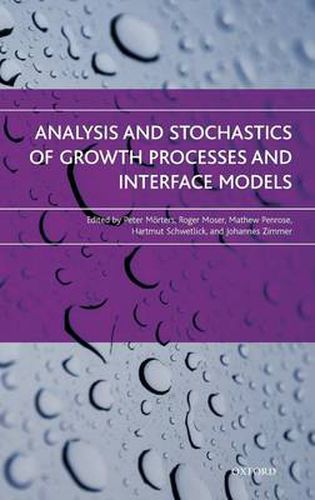This book is a collection of topical survey articles by leading researchers in the fields of applied analysis and probability theory, working on the mathematical description of growth phenomena. Particular emphasis is on the interplay of the two fields, with articles by analysts being accessible for researchers in probability, and vice versa. Mathematical methods discussed in the book comprise large deviation theory, lace expansion, harmonic multi-scale techniques and homogenisation of partial differential equations. Models based on the physics of individual particles are discussed alongside models based on the continuum description of large collections of particles, and the mathematical theories are used to describe physical phenomena such as droplet formation, Bose-Einstein condensation, Anderson localization, Ostwald ripening, or the formation of the early universe. The combination of articles from the two fields of analysis and probability is highly unusual and makes\nthis book an important resource for researchers working in all areas close to the interface of these fields.
Read More





